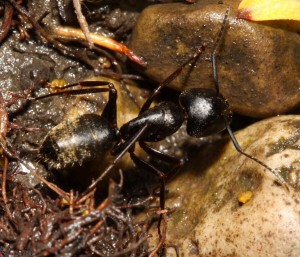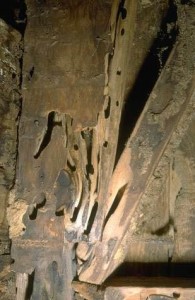MN Pest Control | Carpenter Ant Pest Control
It has been a long winter and ants are on the move, as spring marks the peak months of swarming season. Reports are especially high during their swarming season, April through June. During these months, new colonies are established while fresh food sources are sought out. Carpenter ants are nocturnal migrating pests, with peak hours of activity just before and after sunset.
Minnesota Homeowners Seek Pest Control Services For Carpenter Ants
Many Minnesota homeowners are unaware of their property being invaded, as months may pass without any noticeable signs of infestation.
Ants encompass a broad spectrum of ant species. These species vary greatly in both physical appearance and behavior. This diversity makes it extremely difficult for the average homeowner to prevent or eradicate these pests, as different species are attracted to various food sources and environments.
Despite carpenter ants being one of the most common pests in Minnesota, the widespread misconception remains that they are wood-eating organisms. This is not true, as they only seek out damaged wood in which to nest and establish a colony. However, it is true that this nesting and ensuing tunneling causes extensive structural damage to homes. To make matters worse, carpenter ants are often mistaken for termites, resulting in ineffective extermination treatments.
Ants swarming, homeowners must take preventative measures against infestation. Sealing small cracks and crevasses around floorboards and windows and addressing moisture prone areas are all vital to home protection. One should keep food properly stored and regularly clean and maintain food areas. Although preventive measures help against ants, only a Minnesota pest control expert can ensure one’s home is truly protected.
Control of Carpenter Ants
The control of carpenter ants is essential to prevent major structural damage in a home where these insects have taken up residence. Though carpenter ants do not eat wood, they drill tunnels and chambers into wall studs and other wood to build their nests and can eventually cause as much damage as termites.
Carpenter ants are attracted to damp and rotting wood like the moist area at the bottom of a stack of firewood or compost pile. The insects may sometimes be drawn into a home because of a water leak that has caused rotting wood inside, but they can migrate into dry areas once the colony is well established.
Since carpenter ants are drawn to damp wood, it can be a tremendous deterrent to remove all sources of excess water in and around the home. Leaking pipes, faucets, gutters, and downspouts should be repaired, and any damaged or rotting wood should be replaced with new. Outdoor wood piles should be raised off of the ground to prevent the moistness that carpenter ants love.
If you have a carpenter ant infestation, what you need is an exterminator who will locate the nest location(s) and eliminate all the ants. They are well trained in locating their nesting location and terminating the entire colony.
What to do about household ants
The U of M has some helpful information about what to do about household ants
Jeffrey Hahn, Extension Entomologist, University of Minnesota Extension
Phillip Pellitteri, Department of Entomology, University of Wisconsin Extension
Printer-friendly PDF version (208 K PDF)





